Istanbul, the largest city in Europe, is located on both sides of the Bosphorus and has been called “the bridge between East and West” for centuries. Istanbul proudly displays its diverse cultural heritage, fusing past and present to create a vibrant and fascinating destination. Despite its long history (it was founded in the Neolithic period) and rapid development, modern-day Istanbul has managed to preserve its historic character by preserving its Byzantine architecture and its ancient bazaars.
Topkapi Palace, Hagia Sophia, and the Blue Mosque might be the city’s most well-known landmarks, but visitors to Istanbul will also want to explore the city’s lively bazaars, old neighborhoods, restaurants, and nightclubs.
17. Spice Bazaar
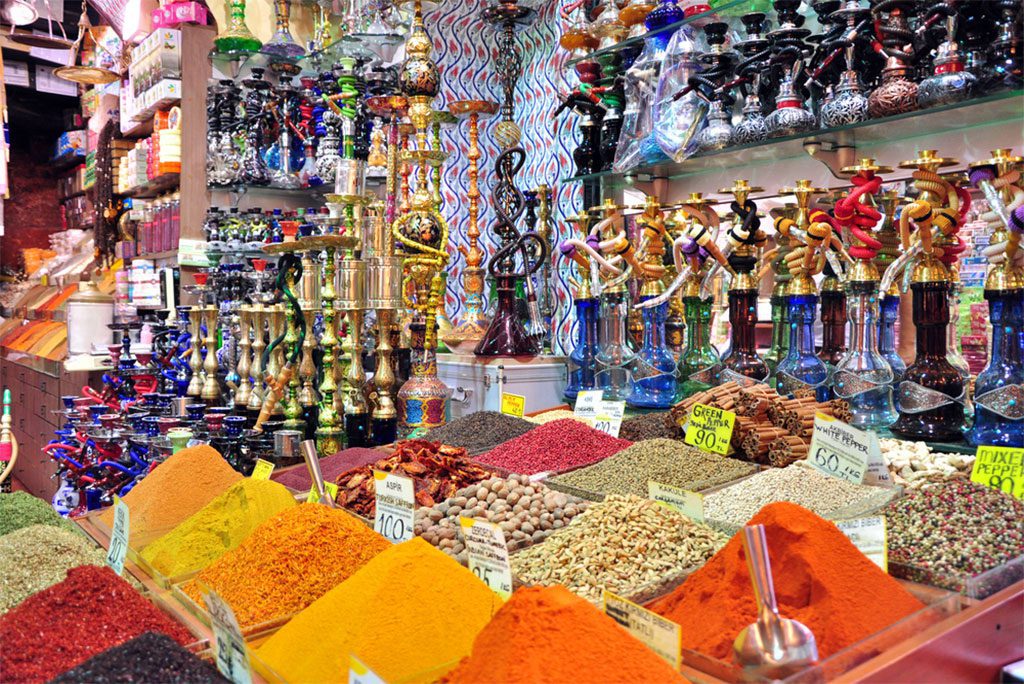
The vibrant and chaotic Spice Bazaar in Istanbul is a delightful and aromatic destination. Located in the Fatih district and only a short distance from the Blue Mosque and Hagia Sophia, this covered shopping complex is one of the most well-known and frequented in all of Istanbul.
The bazaar was constructed in the 1660s and has stunning architecture; more than 85 stores are currently housed inside its magnificent covered streets. In addition to a wide variety of vibrant spices, this market also sells souvenirs and tasty treats. You can buy everything from dried fruits and nuts to one-of-a-kind pieces of jewelry and fabrics.
16. Kiz Kulesi
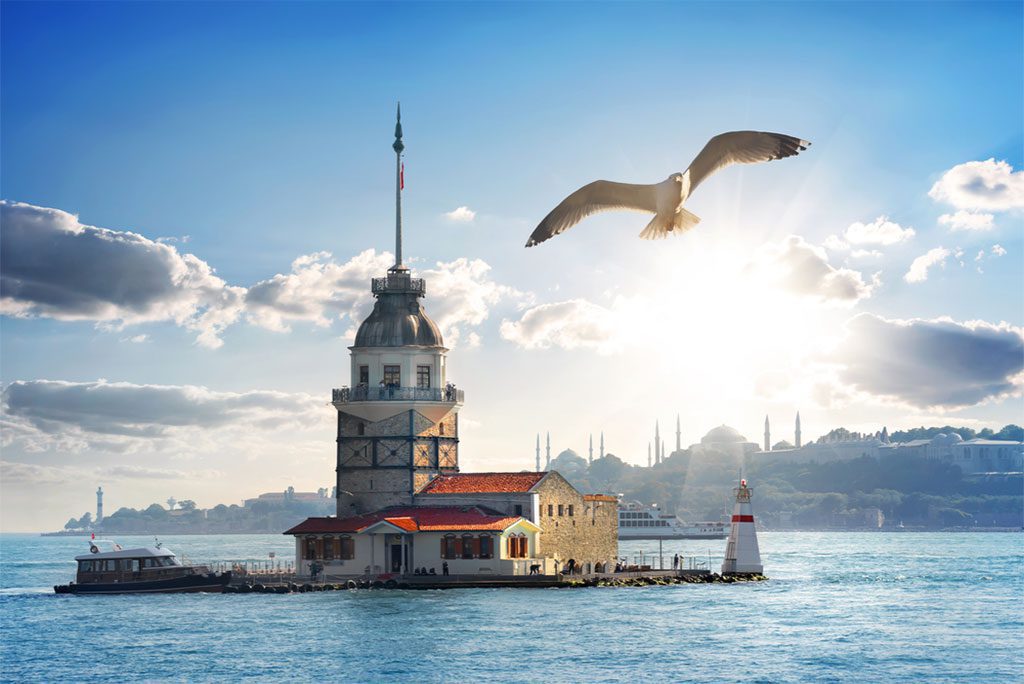
The ancient watchtower of Kız Kulesi, situated on a small islet near the southern entrance to the Bosphorus Strait, is an impressive sight. The “Maiden’s Tower,” as it is known in Turkish, is a landmark with a restaurant and observation deck that provide breathtaking panoramas of the city.
Amazingly, for over two thousand and five hundred years, civilizations ranging from the ancient Greeks and Romans to the Byzantines and Ottomans have all left their stamp on the island by constructing a tower. It has served as a watchtower, lighthouse, and quarantine station throughout the ages and millennia and has been featured in a number of films, including Hitman and The World is Not Enough.
15. Gulhane Park
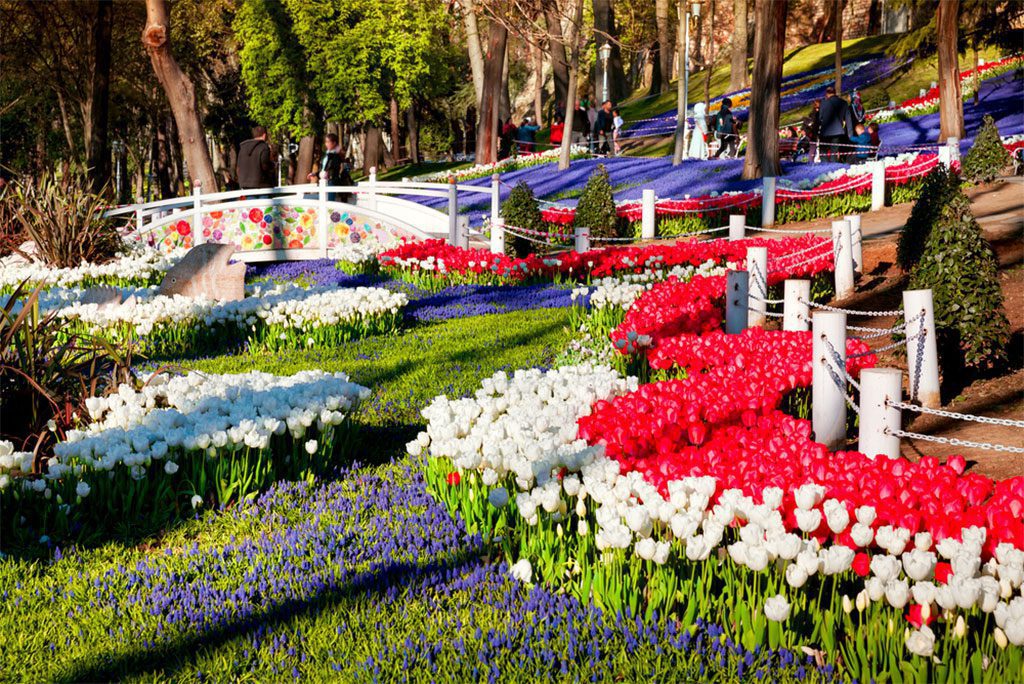
Gülhane, one of Istanbul’s biggest and most beautiful parks, is conveniently located next to the city’s most popular landmark, Topkapi Palace. The park’s breathtaking landscape and exquisite views over the Bosphorus were formerly reserved only for the royal court, but now anyone can enjoy them.
The park’s meandering walkways wind through groves of trees and rich greenery, making it a popular destination for both residents and visitors. The Sublime Porte, a spectacular rococo gate that previously opened to the palace’s farthest courtyard, is located there as well, as is the Istanbul Museum of the History of Science and Technology in Islam.
14. Galata Bridge
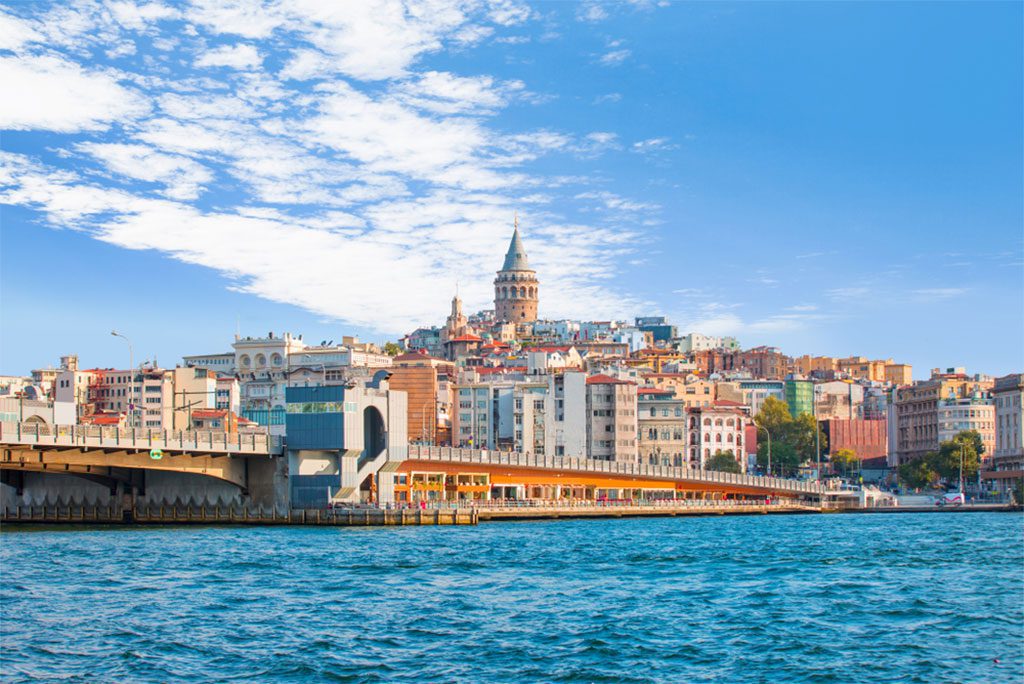
Galata Bridge, which spans the Golden Horn, is one of Istanbul’s most iconic monuments and has been the subject of innumerable works of art, including poetry, fiction, and drama. This bridge, the fifth to exist at its current location, links the heart of the city to the location of the imperial palace and other significant landmarks, including Hagia Sophia and the Blue Mosque.
Underneath the bridge, you can find stores, restaurants, and nargile cafés, and the views of the sea are beautiful thanks to the fishermen that line it. Galata Bridge is an exciting and interesting spot to visit at nearly any time of day, with seagulls squawking above, boats passing below, and the spires of mosques visible atop the surrounding hills.
13. Hippodrome
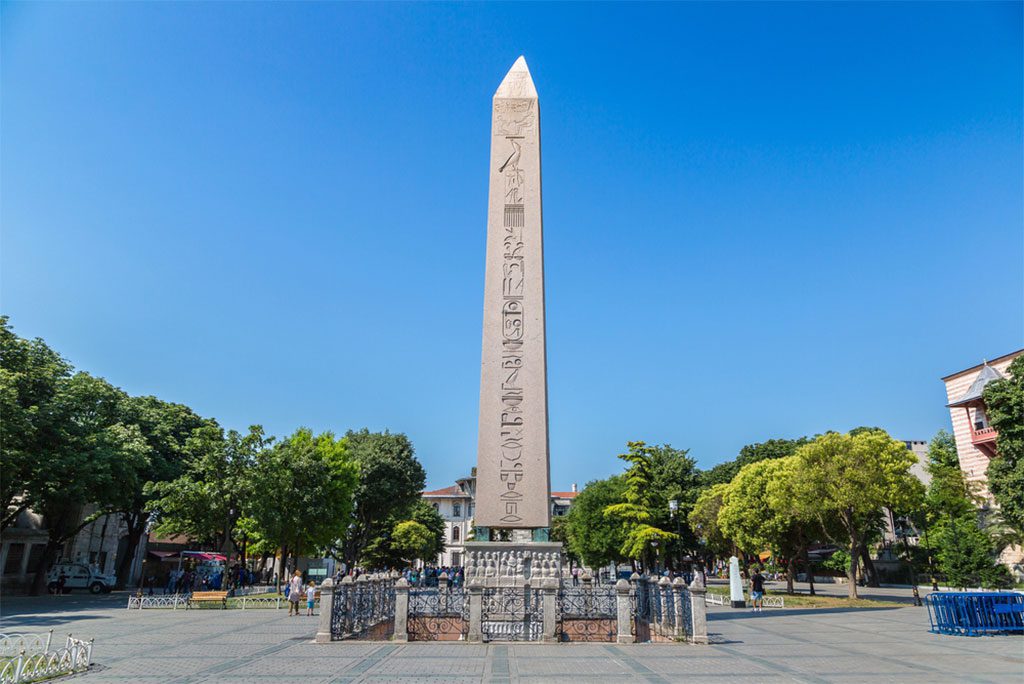
The Hippodrome is now utilized as a promenade and gathering spot, but it was formerly the site of exciting events like chariot racing and gladiator battles as well as public discussions. Even though not much of the area is still there, it is nevertheless a pleasure to meander about because of the wonderful antique structures and sculptures that are on display.
The Hippodrome served as the city’s epicenter for centuries while being lavishly adorned with monuments honoring deities, animals, and heroes. Even though it was rebuilt after the fall of Constantinople in 1204, when most of its stone was stolen, it never quite made it. The Blue Mosque and the over 3,500-year-old Obelisk of Theodosius are now among its most notable features.
12. Taksim Square
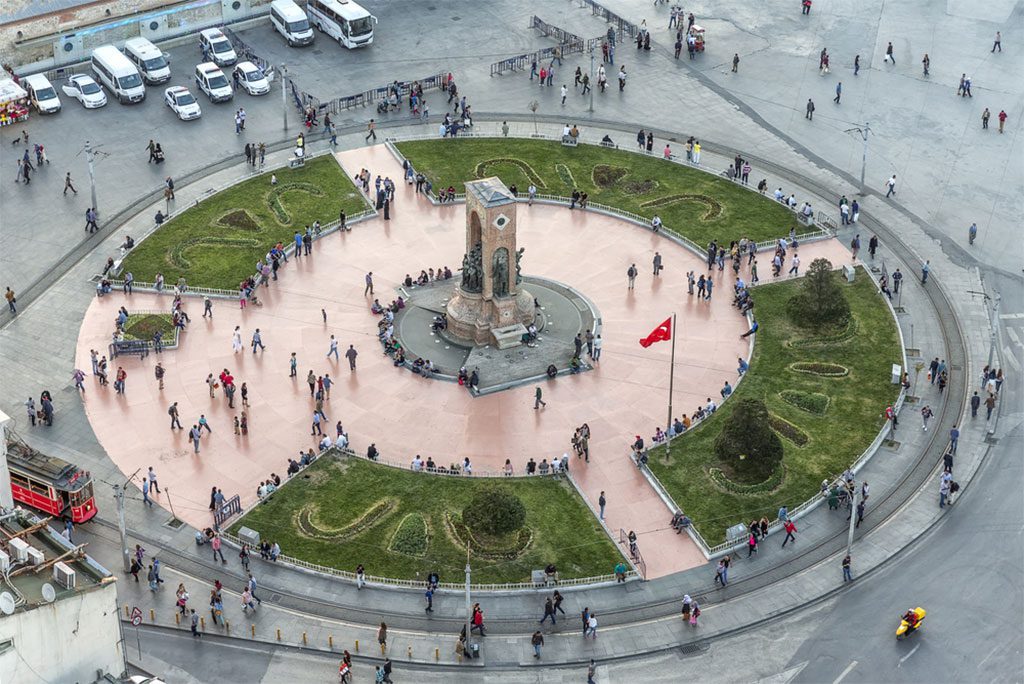
Taksim Square, Istanbul’s massive and pulsating urban hub, sits directly in the middle of the city and is surrounded by innumerable businesses, including restaurants, hotels, and historical landmarks. There are many public events held there, ranging from parades to protests, making it more than just a tourist destination and transportation hub.
It has one of the few surviving patches of greenery in the city and is dominated by the Republic Monument and the vast, magnificent, and ultra-modern Taksim Mosque. In addition to its many shops and restaurants, Taksim is bordered by the multi-purpose Ataturk Cultural Center, which regularly stages operas, plays, and concerts, and by a picturesque vintage tram line.
11. Fener & Balat
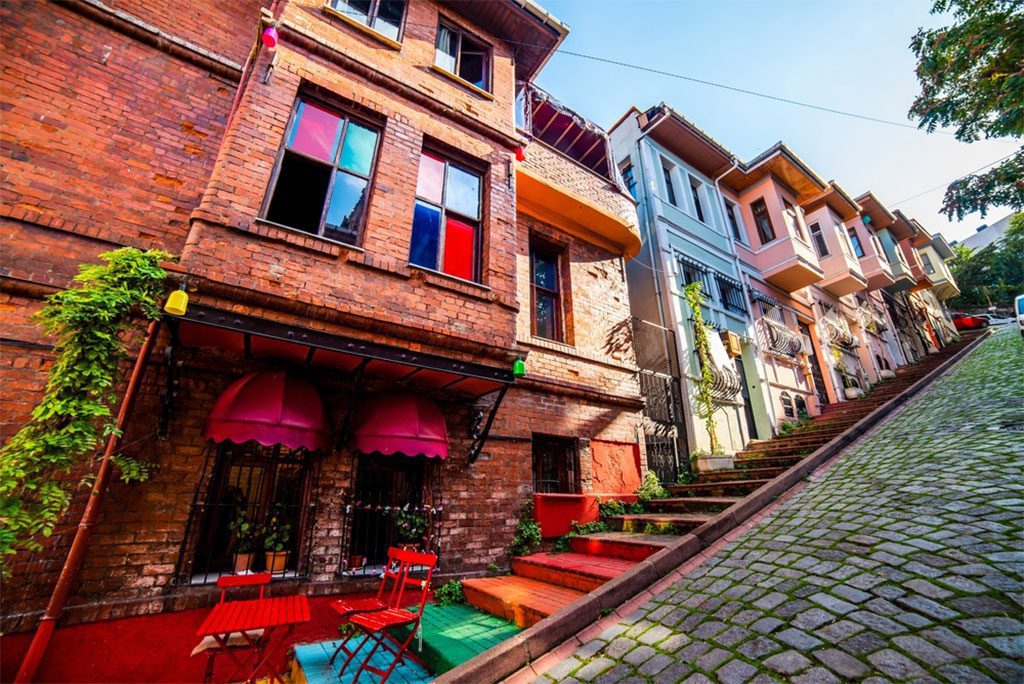
Fener and Balat’s meandering, cobblestone streets are a delight to explore since they are brimming with historic buildings, thriving shops, and stunning churches and synagogues. Tourists are flocking to the two historic neighborhoods that line the European side of Istanbul’s Golden Horn for their picturesque streets and wonderful atmosphere.
Large Greek and Jewish communities formerly thrived in these neighborhoods, and their rich history is reflected in the many fascinating landmarks that can be seen there today, such as the beautiful Phanar Greek Orthodox College, the ancient Ahrida Synagogue, and the medieval Bulgarian Iron Church. Not only is it a great place to go sightseeing, but it also has some of the best restaurants, cafés, and markets in the country.
10. Galata Tower
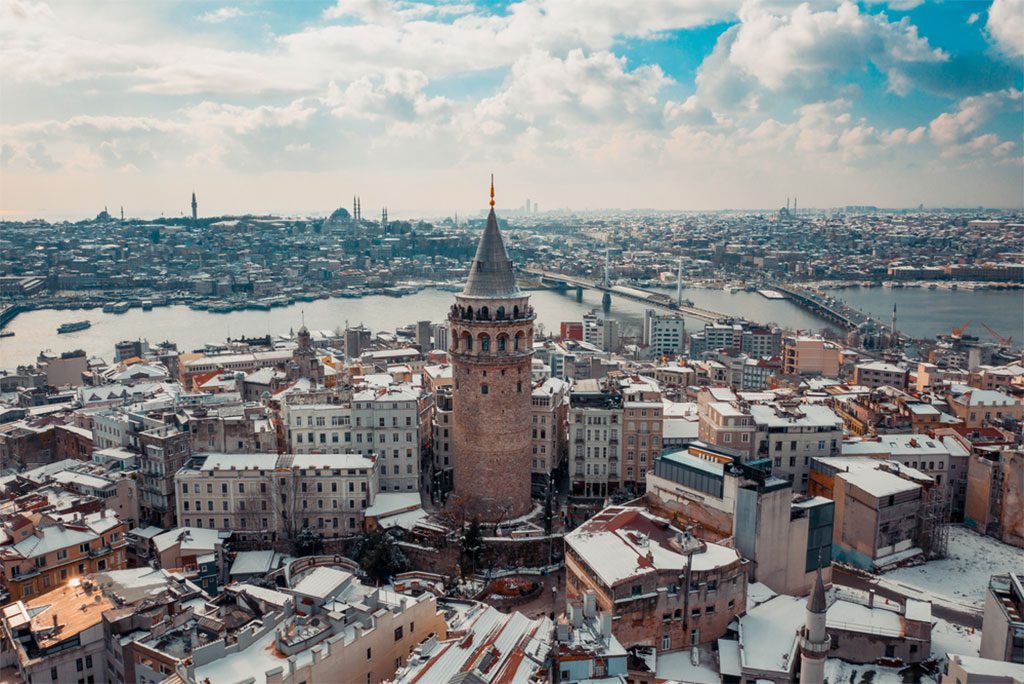
The Galata Tower dominates the Istanbul skyline from its lofty 67 meters (219 feet) and provides breathtaking views of the old city and the Bosphorus. When it was constructed in 1348, the medieval stone tower known as the Tower of Christ was the highest structure in Istanbul. Even now, it towers above Istanbul.
Throughout the years, the tower has undergone several transformations, including a stint as an observation tower used for fire detection. These breathtaking views can be seen on the top floors of the structure, which are now home to a nightclub, a restaurant, and a café that can all be accessed via an elevator.
9. Istanbul Archaeological Museum
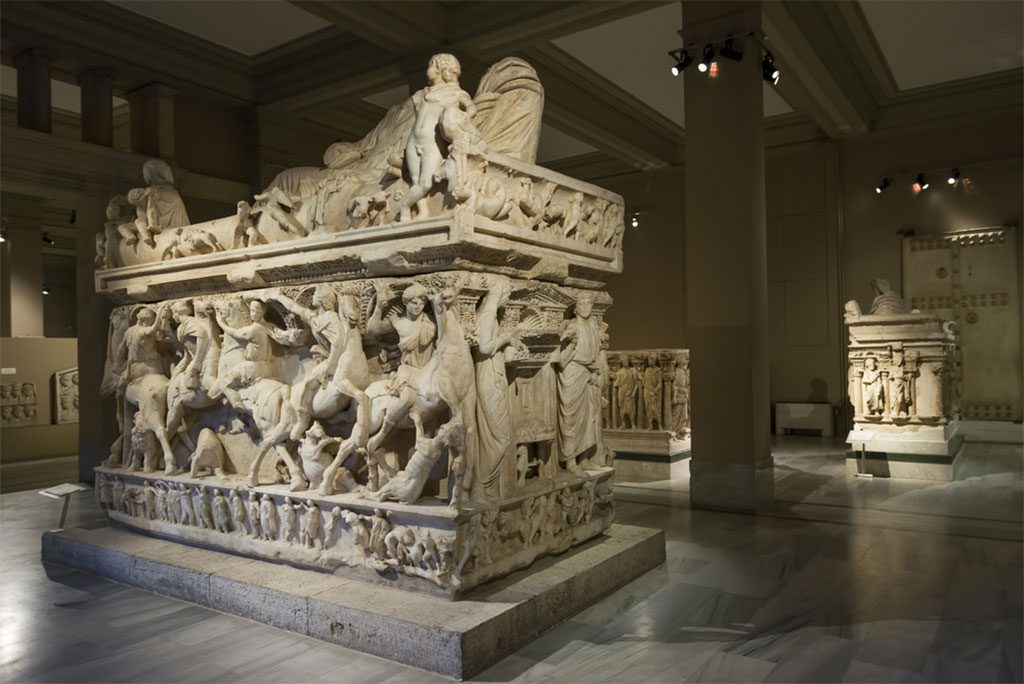
The Istanbul Archaeological Museum is a trifecta of museums: the Archaeological Museum, the Ancient Orient Museum, and the Tiled Kiosk Museum, making it one of the most significant in Turkey.
There are almost a million objects from ancient cultures all over the globe spread between these three museums. The Topkapi Museum, Turkey’s first museum, opened its doors to the public in 1891. In 1472, construction began on the tiled kiosk. Museums house thousands of priceless artifacts, including Alexander the Great’s sarcophagus.
8. Chora Church
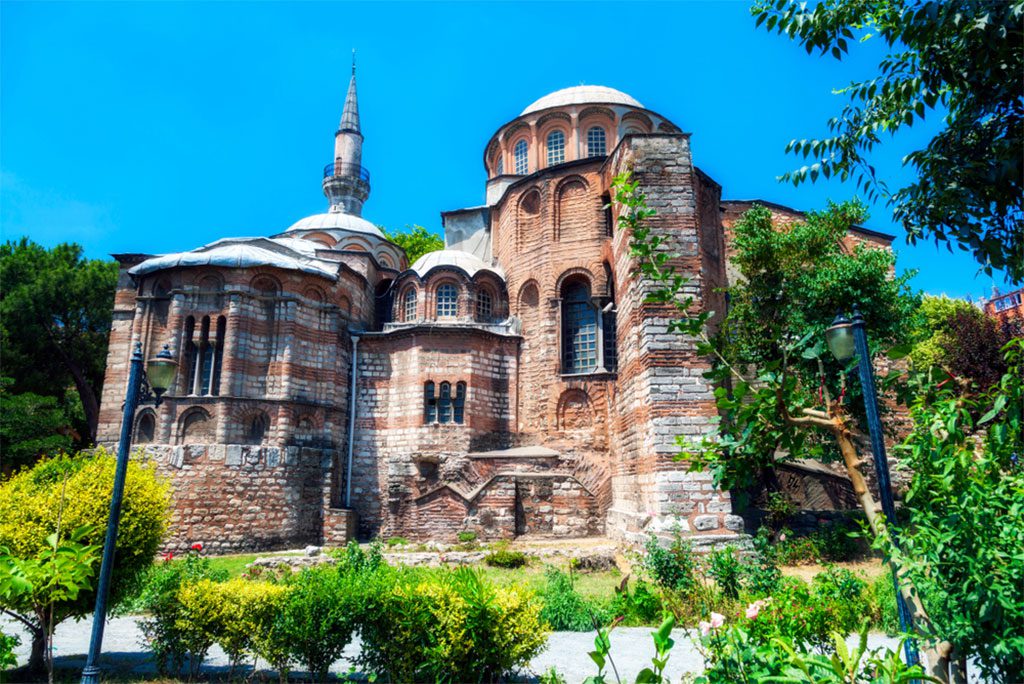
Although the Chora Church is not in the most convenient location for tourists, those who make the trip rave about the stunning Byzantine artwork they saw within. Jesus and his mother, Mary, are depicted in magnificent mosaics and frescoes. Located in Chora, this church is called the Church of the Holy Savior and is widely considered to be one of the best pieces of Byzantine architecture still standing today.
The Chora was first built as a monastery in the time of Constantine; it then served as a mosque for a few centuries until it was transformed into a museum in 1948.
7. Basilica Cistern
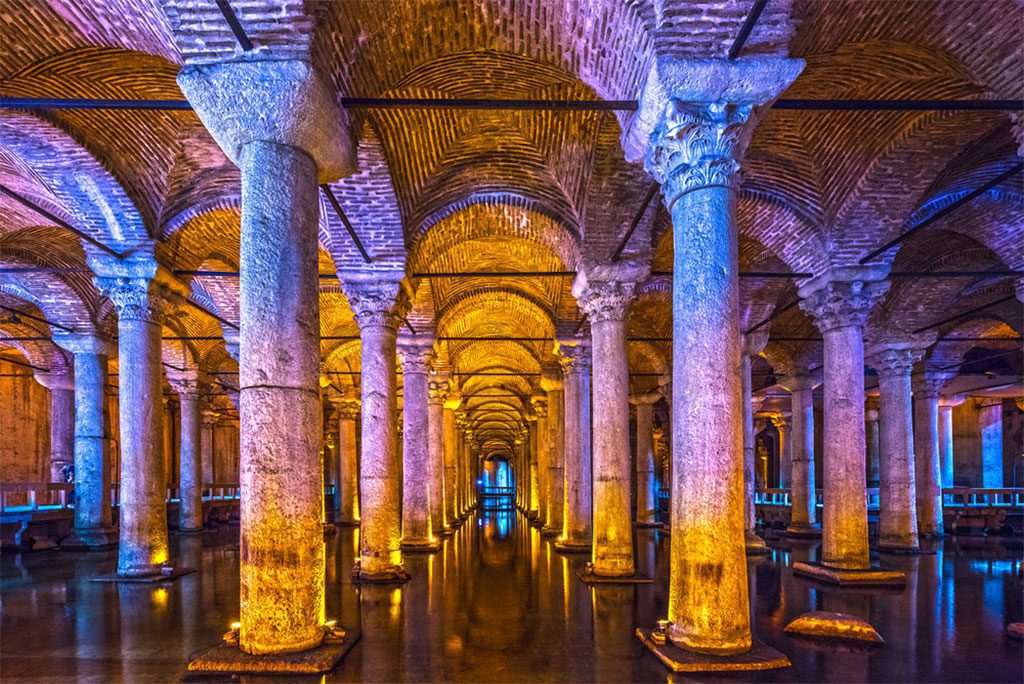
Since the sixth century, when the Roman emperor Justinian I had the Basilica Cistern constructed, it has supplied water to the people of Istanbul. After seeing this architectural marvel, visitors often gush about how sophisticated the Romans were for their time.
Right next to the Blue Mosque is an underground cistern that was formerly the site of a third-century basilica. The Sunken Palace cistern has a storage capacity of 2.8 million cubic feet. The cistern appeared in the 1963 James Bond film From Russia with Love.
6. Dolmabahce Palace
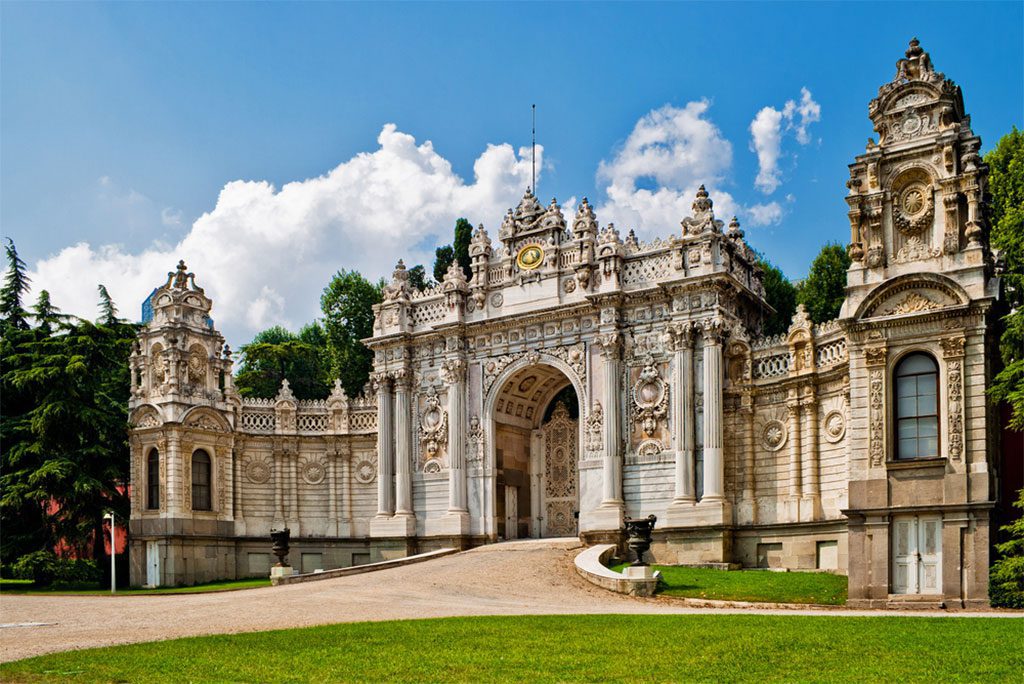
The Dolmabahce Palace, which is located in Istanbul, Turkey, has been called “the Turkish Versailles” because of its lavishness, beauty, and plushness. Turkey’s most opulent palace combines traditional Ottoman design with European Neoclassical, Baroque, and Rococo styles; it was constructed in the 19th century using 14 tons of gold leaf.
Six sultans resided there between 1856 and 1924, and Queen Victoria presented the palace with the biggest Bohemian crystal chandelier ever made. Located on the shores of the Bosphorus, the Dolmabahce Palace has a picture-perfect backdrop.
5. Suleymaniye Mosque
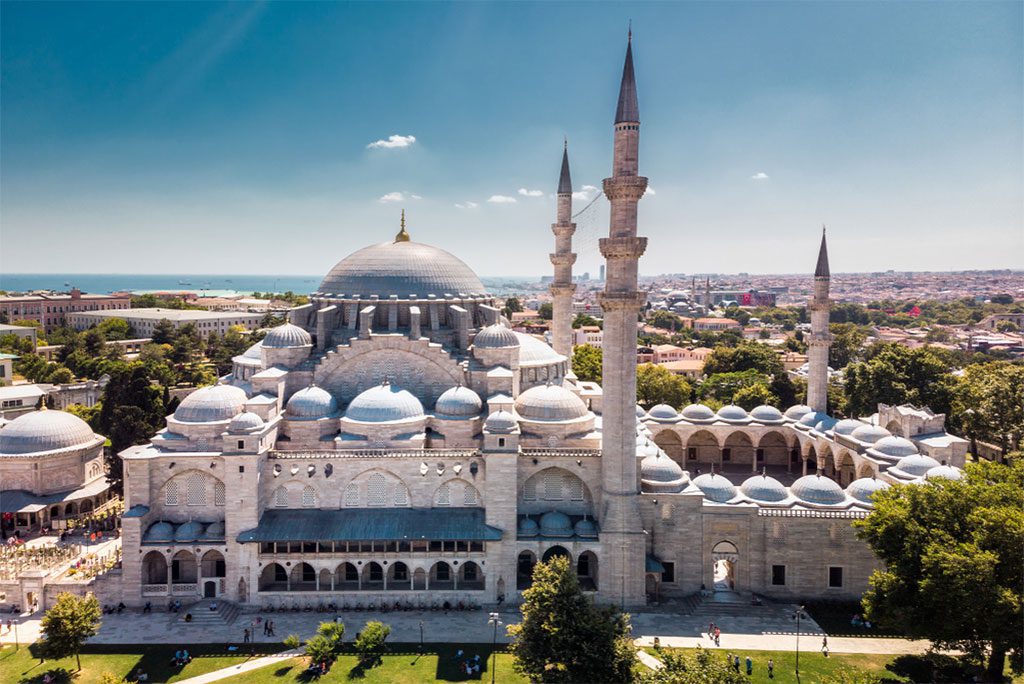
The Suleymaniye Mosque is renowned for instilling a profound sense of spirituality in those who visit. Suleyman the Magnificent commissioned the construction of the mosque on Istanbul’s Third Hill in 1550. The mosque is really spectacular, fusing together the best features of Islamic and Byzantine design.
Fire broke out in the gardens when they were being utilized as munitions storage during World War I, and that was just one of many instances when the mosque suffered considerable damage throughout the years. Midway through the 20th century, it underwent restoration. A sultan’s handiwork can be seen in the mosque’s four minarets. The dome was the tallest in the Ottoman Empire when it was constructed.
4. Grand Bazaar
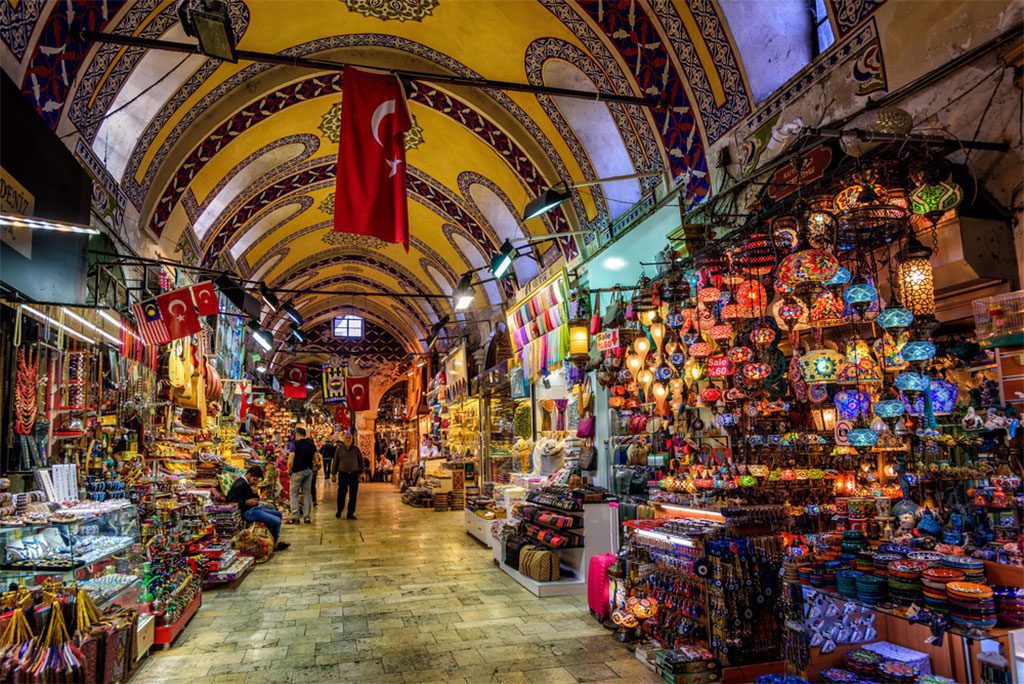
With over 5,000 stores, the Grand Bazaar is one of the biggest covered markets in the world and a must-see for every shopper visiting Istanbul. The bazaar attracts more than a quarter million people every day, and it sells a wide variety of goods, including jewelry, carpets (some of which may or may not be able to fly), spices, antiques, and pottery with intricate hand-paintings.
The Cevahir Bedesten is where the rarest and most costly objects have historically been found in the bazaar, which dates back to 1461 and has two mosques, four fountains, and two hammams, or hot baths. Coins, gem-set jewelry, weaponry, and vintage furnishings can all be found here.
3. Topkapi Palace
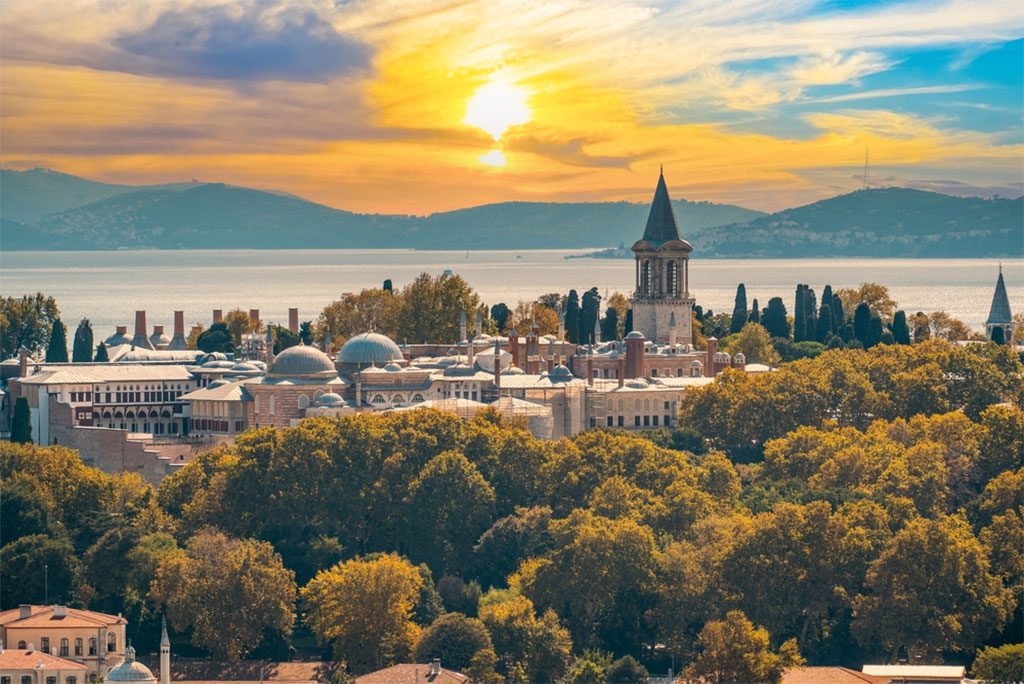
Topkapi Palace is one of Istanbul’s must-see sites because it offers a unique blend of historical significance and breathtaking beauty.
Topkapi Palace, the lavish imperial palace of the sultans of the Ottoman Empire, has been a part of the city of Istanbul for four centuries. This palace is one of the biggest that still stands today. Shortly after his conquest of Constantinople in 1453, Sultan Mehmed II began construction on his palace, where he would spend the next twenty years of his life and die.
The palace was converted into a museum in 1924, and it now houses priceless works of art, china, jewelry, manuscripts, and more from the Ottoman Empire. The Topkapi dagger, which is covered with precious stones, and the Spoonmaker’s Diamond, which weighs 86 carats, are two of the most famous objects in the world. The palace also houses sacred Islamic artifacts such as the sword and mantle of the Prophet Mohammed. The beautiful complex is mostly accessible to the general population.
There are a number of ancillary structures and four main courtyards at this Ottoman palace. The first courtyard, also known as the Janissaries Court, was guarded by the palace’s most elite warriors. Emperor Justinian built the Byzantine church of Hagia Irene on the square in 548, and it is home to a spectacular fountain. Because the Ottomans utilized it as a warehouse and imperial arsenal, the church was able to endure.
The former imperial harem, the Tower of Justice, a hospital, and kitchens that served thousands of meals daily all surround the second courtyard’s vast green area. The main gate was built by Suleiman the Magnificent. The Ahmed III treasury and library can be seen on the third courtyard. There were severe rules on who could enter the third courtyard.
The sultan’s private quarters were located in the fourth courtyard. The structures in the Tulip Garden are covered with intricate blue and white Iznik tiles, as well as mother-of-pearl inlays and tortoise shell inlays. It also has a reflecting pool and marble stairs.
2. Blue Mosque
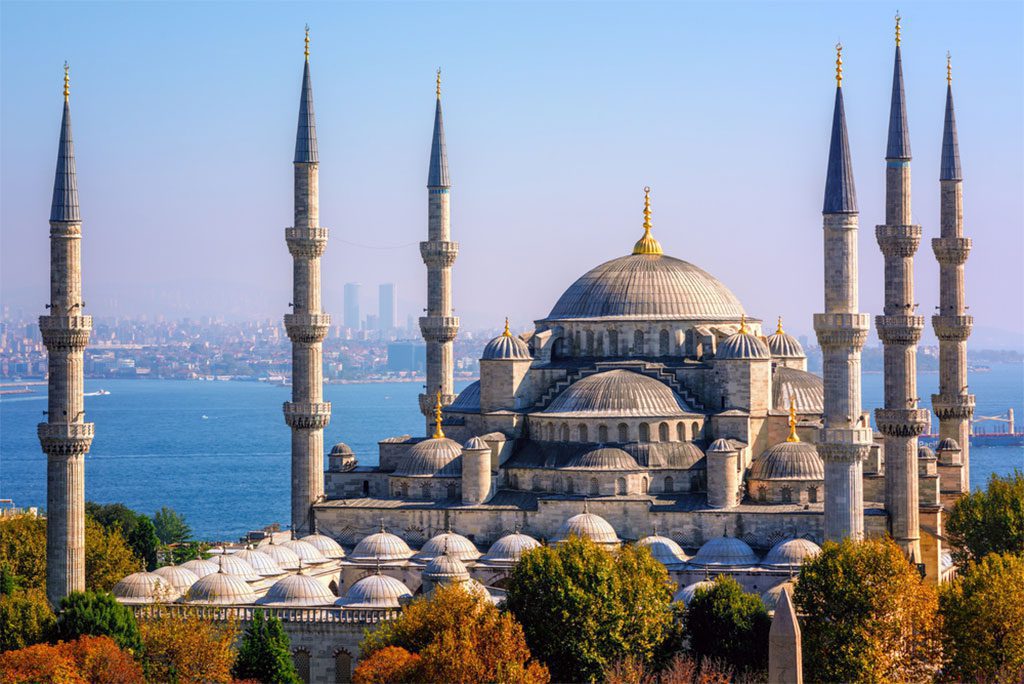
Though it was constructed in the early 1700s, the Blue Mosque is still being used as a place of prayer today. Because of the five daily prayer times for Muslims, the mosque is closed to tourists at other times.
Women must also cover their hair and remove their shoes before entering. The 20,000 ceramic tiles depicting tulip motifs and the 200 stained glass windows are well worth the admission fee. The blue tiles that adorn the mosque’s dome and top floors inspired the structure’s name, and the building was commissioned by Sultan Ahmet.
1. Hagia Sophia
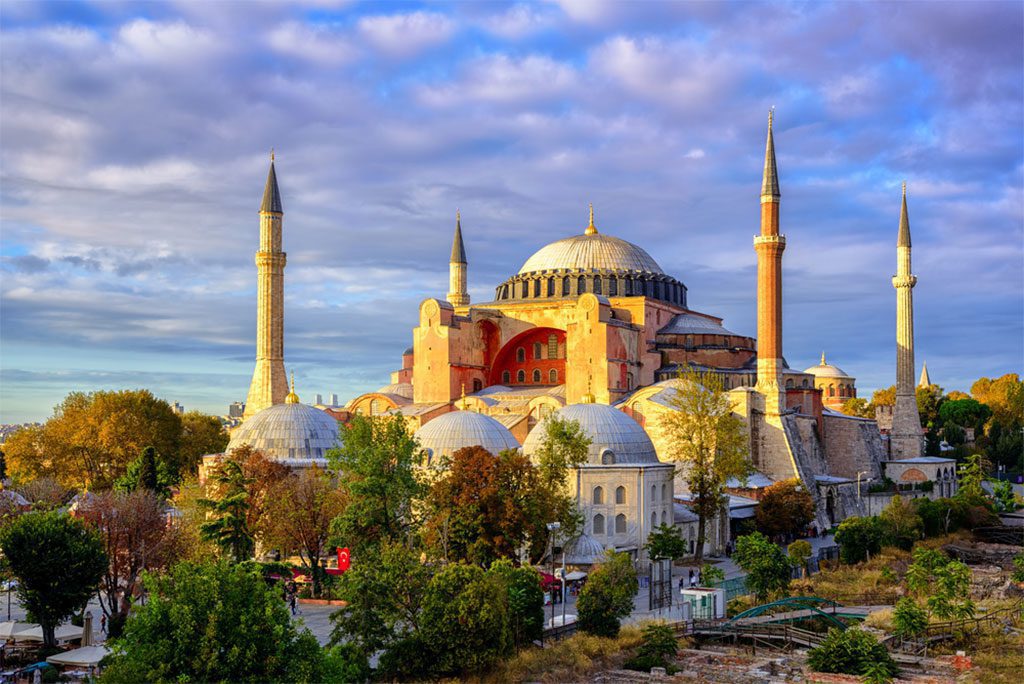
Featuring a gigantic dome (102 feet or 31 meters in diameter), Hagia Sophia is a masterpiece of Roman engineering and was the biggest enclosed area in the world for nearly a thousand years.
Holy Wisdom, or Hagia Sophia in Greek, alludes to Jesus Christ, the second member of the Holy Trinity. Built between 532 and 537 CE at the direction of Byzantine Emperor Justinian, the cathedral mostly served the Eastern Orthodox faith until 1453, with a brief interlude as a Roman Catholic cathedral in the early 1200s.
Many Christian relics were either destroyed or covered over with plaster when the Ottoman Turks conquered Constantinople in 1453 and turned the city into a mosque. The building was shuttered in 1931 until it was reopened as a museum by the Republic of Turkey in 1935.
The Imperial Gate leads directly into the central nave, where visitors can gaze upward at the magnificent mosaic ceiling of the dome.
The main nave has marble walls that go all the way up to the gallery, while the inner narthex and side naves are also lined with marble from floor to ceiling. Expensive marbles of numerous colors were hand-picked from around the empire and used only in the construction of the Hagia Sophia.
There is a Fountain of Purification in the Hagia Sophia courtyard with the Greek palindrome inscription, “Wash your sin, not only your face.”
The Hagia Sophia Library was constructed in 1739 and has antique Turkish tiles and wooden, engraved bookcases that display both books and objects from the library’s collection.
Damage from earthquakes, fires, and riots throughout the years has necessitated extensive restoration work, but the church is still a stunning structure that many see as the eighth wonder of the world.


